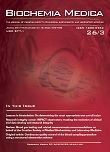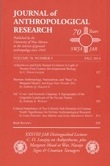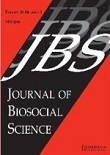Šupe-Domić, D., G. Milas, I. Drmić Hofman, L. Rumora, I. Martinović Klarić:
 Daily salivary cortisol profile: Insights from the Croatian Late Adolescence Stress Study (CLASS)
Daily salivary cortisol profile: Insights from the Croatian Late Adolescence Stress Study (CLASS)
The goal of the study was to gain knowledge about basal hypothalamic-pituitary-adrenal (HPA) axis activity in late adolescence. The total analytic sample consisted of 903 upper secondary school students aged 18 to 21 years. It was a probabilistic two-stage cluster sample stratified according to the type of school (gymnasium/vocational) from four largest cities in Croatia (Split, Rijeka, Osijek and Zagreb). Cortisol was sampled at home at three time points (at awakening, 30 to 45 minutes after awakening and at bedtime) over the course of one day. Two major determinants of the basal salivary cortisol activity were revealed: gender and awakening-bedtime rhythm. Female students had a more robust cortisol awakening response, a steeper diurnal cortisol decline and a greater area under the cortisol curve than male students. Those students who woke-up earlier and were longer awake (“early risers” and “short sleepers”) had a more robust cortisol awakening response, a flatter cortisol slope and a larger area under the cortisol curve than students who woke-up later and were shorter awake (“night birds”, “sleepy heads” and “sleeping beauties”). Minor, but significant predictors of the basal HPA axis activity revealed potentially vulnerable sub-groups in late adolescence, such as male drug abusers and females without a best friend.
Biochemia Medica 26 (3):293-464, 2016.
Peternel, L., A. Malnar, I. Martinović Klarić:
 Cultural importance of two lifestyle sub-domains (education & professional life and intimate & family relationships) in Croatian youth: Significance for holistic anthropological research.
Cultural importance of two lifestyle sub-domains (education & professional life and intimate & family relationships) in Croatian youth: Significance for holistic anthropological research.
In this study the construct of “the good life” is explored among upper secondary school seniors from two types of schools in four Croatian cities. The information collected through free-listing during the first phase of the field work was used to create a set of structured questions contained in the questionnaire, as a part of the survey in the second phase of data collection. The results of the study demonstrate the usefulness of utilizing cultural consensus theory in analyzing the structure and distribution of cultural knowledge about education, work, intimate and family relationships in a large and heterogeneous sample of students. The study also confirms the purposefulness of extending cultural consensus with residual agreement analysis for capturing differing cultural emphasis within the shared cultural knowledge of the entire group. Free-listing proved as an elegant ethnographic technique for eliciting operationally explicit measures of two lifestyle sub-domains. This study design represents a solid baseline for our continuing holistic anthropologic research involving bio-cultural modeling. However, in-depth interviewing is necessary for more comprehensive understanding of the cultural model of good life domain and its various sub-domains.
Journal of Anthropological Research 70 (3):411-437, 2014.
Peternel, L., A. Malnar, I. Martinović Klarić:
 The analysis of cultural consensus model of two good life sub-domains - health & well-being and migration & socio-economic milieu - in three population groups from Croatia.
The analysis of cultural consensus model of two good life sub-domains - health & well-being and migration & socio-economic milieu - in three population groups from Croatia.
In this study the construct of good life is explored among upper secondary school seniors, their parents and professors by applying the analysis of cultural consensus model. A total of 469 students, 474 parents and 158 professors from four Croatian cities participated in the study. The information collected through interviewing and freelisting during the first phase of the filed work was used for creating a set of structured questions contained in the questionnaire, as a part of the survey in the second phase of data collection. In this study the results are reported on two good life sub-domains: health & well-being and migration & socio-economic milieu. The obtained results indicate heterogeneity of studied sample groups, incomplete inter-generational transmission of cultural values and examples of two subgroups that resist cultural norms and do not comply to the dominant “competence-as-sharing” paradigm. The value of testing cultural consensus model based on the emic approach and locally significant phenomena is demonstrated for planning and conducting holistic anthropological research.
Journal of Biosocial Science, 47 (4):469-492, 2015.